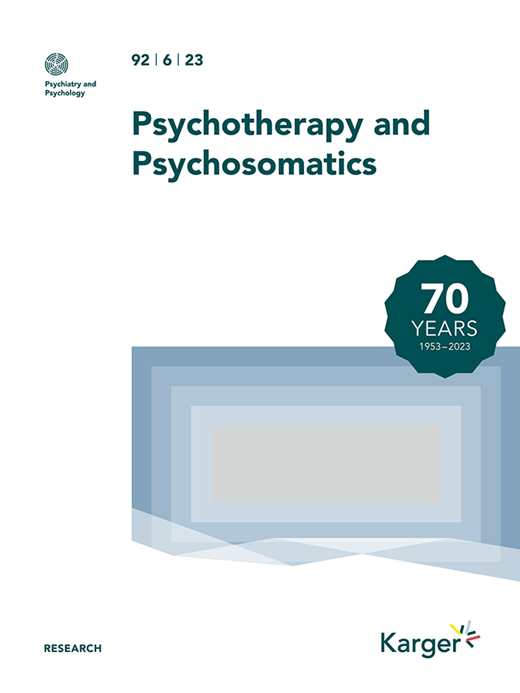精神病学和临床心理学中症状和分期的纵向发展:向Giovanni Fava致敬。
IF 17.4
1区 医学
Q1 PSYCHIATRY
引用次数: 2
摘要
本文章由计算机程序翻译,如有差异,请以英文原文为准。
Longitudinal Development of Symptoms and Staging in Psychiatry and Clinical Psychology: A Tribute to Giovanni Fava.
The introduction of diagnostic manuals, such as the first mention of mental disorders in the International Classification of Diseases (ICD-6) in 1948 [1] and the Diagnostic and Statistical Manual of Mental Disorders in 1952 [2], was a big step forward in the fields of psychiatry and clinical psychology. The operationalization of diagnostic criteria for mental disorders such as depression or schizophrenia, which lacked characteristic morphological features or laboratory biomarkers, greatly increased the reliability of clinicians’ diagnoses and their capacity to communicate with one another. However, those classifications were based on a cross-sectional view and informed clinicians, researchers, patients, and their relatives only little about the expected longitudinal course and development of a mental disorder. More specifically, cross-sectional diagnostics did not inform about trajectories of symptom severity over time, individual characteristics and combinations of symptoms, or comorbidities. Such elements are important when it comes to developing a sequential treatment plan and adjusting it as illness characteristics and symptom levels change over time. As early as 1967, Feinstein encouraged clinicians to develop their own “basic science” to use clinical phenomena and data to generate classification systems and to ultimately analyze the clinical process quantitatively [3]. Feinstein appears to have been a lone voice calling in the wilderness at that time though.
求助全文
通过发布文献求助,成功后即可免费获取论文全文。
去求助
来源期刊

Psychotherapy and Psychosomatics
医学-精神病学
CiteScore
29.40
自引率
6.10%
发文量
46
期刊介绍:
Psychotherapy and Psychosomatics is a reputable journal that has been published since 1953. Over the years, it has gained recognition for its independence, originality, and methodological rigor. The journal has been at the forefront of research in psychosomatic medicine, psychotherapy research, and psychopharmacology, and has contributed to the development of new lines of research in these areas. It is now ranked among the world's most cited journals in the field.
As the official journal of the International College of Psychosomatic Medicine and the World Federation for Psychotherapy, Psychotherapy and Psychosomatics serves as a platform for discussing current and controversial issues and showcasing innovations in assessment and treatment. It offers a unique forum for cutting-edge thinking at the intersection of medical and behavioral sciences, catering to both practicing clinicians and researchers.
The journal is indexed in various databases and platforms such as PubMed, MEDLINE, Web of Science, Science Citation Index, Social Sciences Citation Index, Science Citation Index Expanded, BIOSIS Previews, Google Scholar, Academic Search, and Health Research Premium Collection, among others.
 求助内容:
求助内容: 应助结果提醒方式:
应助结果提醒方式:


